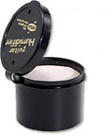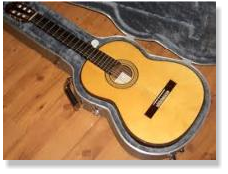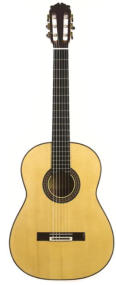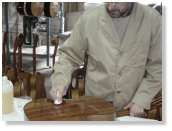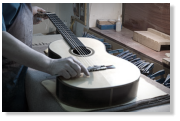 Guitars are made from wood, which is an alive material. As such, it requires specific cares and maintenance for its conservation, and to exploit its full musical potential.
Guitars are made from wood, which is an alive material. As such, it requires specific cares and maintenance for its conservation, and to exploit its full musical potential.
The worst enemies of wood --and therefore of the guitar -- are: insufficient humidity and extreme temperatures, which result in cracks, desizing, deformations and poorer sound quality.
We advise:
• Not to leave the guitar directly exposed to the sun for long periods.
• Not to keep it in the car boot or inside the car, since, especially in summer, internal temperatures can be extreme.
• Never to place the guitar near heat-emanating devices: radiators, air conditioning, etc., or near windows or doors, where temperature variations may occur.
• Avoid sudden changes in environmental conditions and temperature. Before taking the guitar out of its case, it is convenient to leave it for some time until it becomes acclimatized.
• Avoid environments with less than 30% humidity. Recommended humidity level is between 50% and 70%.
• When not used, keep it always inside the case, which ideally should have a small humidifier and hygrometer to check whether the humidity level is appropriate. The humidifier helps while the instrument is inside the case, but it is not enough if the instrument is exposed to a very dry environment.
Nowadays there is a wide range of cases with built-in hygrometers, as well as different humidifiers that can be placed inside the case
Cleaning
We should never clean the case with industrial products, as these may contain alcohol or abrasive additives that could damage it. As a general rule, we should use a polish cloth slightly moistened with water.
We must be especially careful with shellac varnishes. In this case, if a drop of alcohol or other strong liquid drops onto its surface, we must immediately wash it to prevent the shellac from ruining.
Also, to avoid degradation caused by our sweat drops while playing, after the session we should clean it with a polish cloth, gently rubbing in the direction of the wood grain veins.
Peg Box
For maintenance we should -at least once a year- lightly lubricate the mechanism with liquid lubricating oil, which will help reduce wear and tear and improve performances.
Strings
With the passing of time, strings lose their qualities and sound capacity. It is advisable to replace them when we notice they have lost sound; this can depend to a great extent on how often and we play and on the intensity we play with, but we should replace them at least once a year.
When replacing the strings, we should do so one by one, and tuning them as they are changed; this is done in order to avoid the neck from loosening, which would cause some sound loss -it could be recovered-, but more slowly.
If we travel (especially by air), we should loosen the strings to avoid potential damages to the guitar’s head or neck.
After playing, clean with a polish cloth any traces of sweat left by our hands on the strings.
Breaks or cracks
No doubt, immediately: loosen the strings and take it to a trusted luthier. Never try to repair it with glues not suitable for this job, it can cause irreparable damage.
The varnish applied to the instrument intends to protect the wood and improve its sound. A soft, flexible varnish such as shellac amplifies sound and provides warmth to it, while a more rigid varnish delivers a colder sound.
Shellac varnish is one of the most ancient finishings: its application began two centuries ago. It is a 100% environmentally-friendly process. In fact, shellac is made from a natural resin which, once applied to the guitar, becomes a part of it, protecting it and even enhancing its sound.
It is a very delicate finishing to take care of. However, shellac is easily re-touchable, so scratches and stains can be removed through a shellac "refreshment" treatment, leaving the guitar as new-- something which is not normally possible with other types of varnish. This treatment should be applied around every 4 years.
As a routine, we should clean it lightly with a dry polish cloth every time we finish playing and before putting it into the case.
Other finishings like nitrocellulose or polyurethane are not so delicate, but we should still clean it lightly with a wet polish cloth to remove traces of sweat, dust or other substances that in the long run can damage the guitar’s appearance and sound quality.

